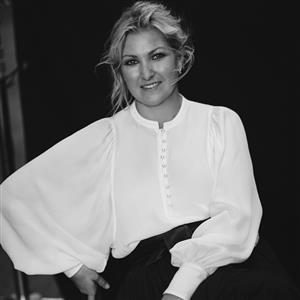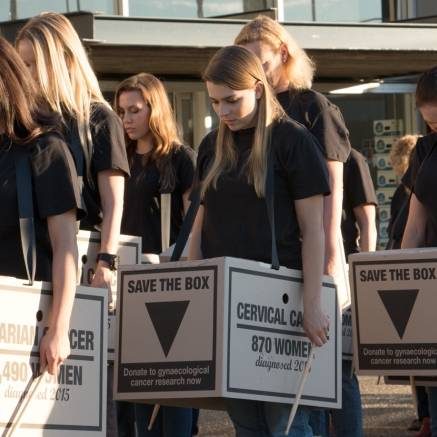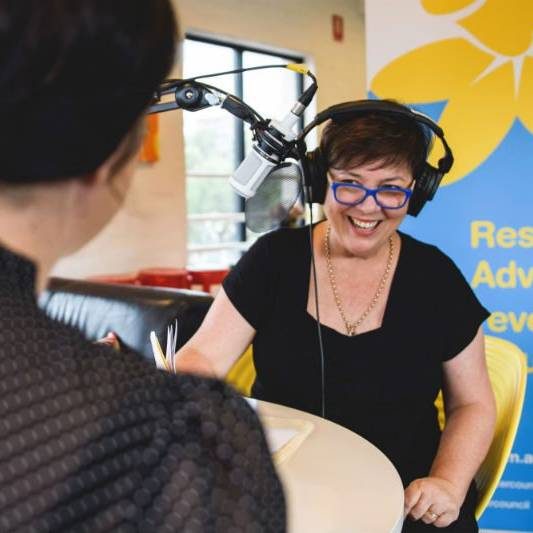
Every ten hours, one woman loses her battle with ovarian cancer in Australia.
Ovarian Cancer is one of the most lethal of all cancers and has a lower survival rate than both breast cancer and cervical cancer. In its early stages, ovarian cancer usually presents no symptoms or only vague ones such as bloating, abdominal pain, weight loss, back pain and indigestion – common everyday issues that many women often experience. By the time most women are diagnosed, it is often too late as they are already in the advance stages of the disease.
Unlike other cancers, there is currently no early detection test for ovarian cancer. Lucinda Nolan, CEO of Ovarian Cancer Research Foundation (OCRF) says that the key to challenging the statistics is in an early detection test. “Less than 25% of women diagnosed with ovarian cancer survive beyond five years. If we had an early detection test, this would increase to 80 -100%.” She adds, “An early screening programme for ovarian cancer needs to be part of a women’s health check, similar to pap smears and mammograms.”
Associate Professor Thomas Jobling, Co-Founder of OCRF and Director of Gynaecologic Oncology at the Monash Medical Centre, says researchers from OCRF are getting close to a breakthrough in developing such a test. “We are making significant progress and are currently trialling an early diagnostic test in patients and high risk women,” says Associate Professor Jobling. “We’ve also discovered a non-toxic antibody that could help prevent ovarian tumours from invading nearby cells,” she adds.
With less than 2% of cancer research grants in the past two years being dedicated to ovarian cancer, OCRF is appealing to the public to help raise much-needed research funds to help them continue in their mission to find an early detection test and save lives of women. “Witchery’s support of the OCRF via the White Shirt Campaign is critical to help raise much needed funds. We also need the financial support of the broader community. We can only change the statistics with your help,” concludes Associate Professor Jobling.
Key facts about Ovarian Cancer
- Ovarian Cancer is a malignant tumour of one or both ovaries.
- Each year about 1,500 Australian women are diagnosed with ovarian cancer.
- Ovarian cancer has a low survival rate with one woman dying from ovarian cancer every 10 hours in Australia.
- It is most common in women over 50
- In early stages, ovarian cancer usually has no symptoms or only vague ones. If symptoms occur, they may include: pressure, discomfort or pain in the abdomen or pelvis; swollen or bloated abdomen; appetite loss or feeling full quickly; changes in toilet habits; heartburn and nausea; tiredness; unexplained weight loss or gain; changes in menstrual pattern or bleeding after menopause; or pain during sex.
- Most women diagnosed with ovarian cancer do not have a family history of the disease.
- There is currently no early detection test for ovarian cancer.
Letitia Linke’s story:
Thirty-seven year old mum of two, Letitia Linke, from was shocked to be diagnosed with ovarian cancer three years ago. She says that an early screening test of ovarian cancer is desperately needed, so that women like her, who present no obvious symptoms, can be diagnosed earlier, before the cancer spreads and damages their body.
I was thirty-four years old. I was on a health kick. I was eating well, working out with a personal trainer and had lost 30 kgs. I was feeling great, when I discovered a little lump in my abdomen. I went to my doctor, who after a couple of visits, suspected a case of hernia. I was sent to specialist reconstructive surgeon, who ordered an MRI. They found what they thought was a severe case of endometriosis.
I had a routine procedure to ‘clean up’ the endometriosis. Thankfully, while in surgery, the gynecologist also performed a biopsy of my ovaries. That’s when they diagnosed me with ovarian cancer.
It was huge shock.
I had never felt better. I didn’t have any of the fatigue associated with cancer. I had no family history and didn’t really have any symptoms, except perhaps a change in bowl movements, which I had put down to my new diet. From then on everything happened very fast. A week later I had a radical hysterectomy to remove my ovaries, uterus and part of my cervix. Since then, I have undergone chemotherapy, radiotherapy and multiple surgeries.
Currently, I have maintenance chemotherapy once a month. I don’t know if and when the cancer will return. I am just trying to live life as normal as I can. A screening test resulting in early detection of ovarian cancer would mean that many more women like me with no obvious, or with silent symptoms, could be successfully treated before the cancer spreads and damages their body.
When ovarian cancer is detected and treated early, 80-100% of women will survive beyond five years compared with only 25% when diagnosed at a late stage. If mine had been detected earlier, I may not have had to go through as many surgeries, chemotherapy or radiotherapy. I wouldn’t have had to be away from my family for so long for continuing treatment.
We desperately need more funding for the Ovarian Cancer Research Foundation (OCRF) to continue their research and to develop an early detection test that is affordable and available to all women. They get no funding from the government and rely on financial support of the corporate sector and the broader community, OCRF and Witchery’s White Shirt Campaign raises much-needed research funds to support the OCRF’s mission to find an early detection test for ovarian cancer. It has also increased the profile and awareness of ovarian cancer in Australia. I am hugely grateful for this campaign and what is had done already to help women like me with living with or battling the disease.
About OCRF
The OCRF was established in early 2000 by Associate Professor Thomas Jobling and Liz Heliotis and is Australia’s leading independent body dedicated to national ovarian cancer research. OCRF’s goal is to raise awareness and vital research funds for the development of an early detection test to save women’s lives. The OCRF has three main objectives:
- To develop and implement an early detection program for ovarian cancer
- To improve the mortality rate, management and long term survival of women with ovarian cancer
- To raise community awareness of the importance of early detection
OCRF receives no government funding and relies solely on the financial support of corporate Australia and the broader community. Funds are distributed as scientific grants to dedicated ovarian cancer researchers in Australian and New Zealand hospitals, universities and research institutes.
How you can help
Everyone can help – you don’t need to be a scientist to make a difference. Join #WhiteShirtCampaign. Buy a White Shirt from Witchery between 6 April – 8 May 2017. Witchery will donate everything except GST to the Ovarian Cancer Research Foundation (OCRF). www.witchery.com.au/whiteshirtcampaign
Donate directly to the OCRF or fundraise to support the White Shirt campaign at www.whiteshirtcampaign.com.au


